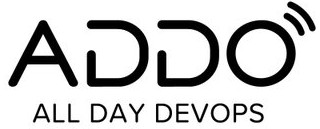Learn to See, Measure and Automate With Value Stream Management
MAY 4, 2021 9:46:34 AM BY TAURAI MUTIMUTEMALance Knight, the COO of ConnectALL, presented a case for companies to recognize, trace, and even automate their value streams using tools. You can view the whole talk here or read on for a summary. Or check out both!
To start with, Lance alluded to the chaos constantly present with many chief information officer roles. This includes such pressures as business outcomes, security concerns, team management, and value stream management.
 CIOs everywhere are faced with this chaos
CIOs everywhere are faced with this chaos
With this noise contributing to activities around managing information, you'll also get a plethora of tools that intend to solve problems. At ConnectALL, the way to silence all this noise and start making progress begins with value stream optimization.
What Is Value Stream Optimization?
According to Lance, value stream optimization is the process of analyzing a software delivery value system while looking for areas to improve, all in line with attaining set objectives. It's obviously impossible to measure something you've never seen. This is why Lance proposed these three steps in order to get your value stream optimization quest on the go.
 See + Measure + Automate
See + Measure + Automate
- See: Every business has a value stream. Take time to observe what yours is before you try to manage it.
- Measure: Set metrics around the value stream pipeline. This allows you to set baselines and encourage action toward the next step.
- Automate: Find out how you can improve production efficiency.
How to See Your Value Stream
It's typically straightforward to "see" the value stream of a manufacturing line. For instance, the airplane assembly chain visibly separates the sourcing of parts from the actions that add value to raw materials. All the way to the product inspection phase. All steps along this chain are timed and somewhat predictable.
This is not the same with software delivery value chains.
 The typical software delivery assembly line
The typical software delivery assembly line
You can stare as long as you want at the image above, but unlike the airplane example, you cannot point out the value chain. Starting to observe one involves discussions with every team to learn their processes and tools. Some tools will overlap teams, which suggests a flow. Tracing how the code flows also helps clear up the entire map.
In the end, you get something like this:
 Software development value chain
Software development value chain
As depicted in the image above, you don't have to guess who is doing what part of the development process. Information and material processing get more defined and every step from feature request to delivery to the customer becomes visible.
When creating your own, pay close attention to feedback loops. They surface when you ask "How fast can we move defects back to request flows?"
Measuring Value Streams
The first step here is defining the metrics necessary to capture data in order to make decisions. The way Lance suggested you go about this process is through a Goal-Question-Metric model.
- Goal: What do we want to know about the software or processes thereof?
- Question: Are there any defects on the deployed software?
- Metric: Are there defects after deployment?
Mapping these questions onto the value stream you'll have previously seen allows you to know what to measure at each stage. They also trickle down any hierarchy the company may have formed. Asking is the best way to gather metrics to put on a dashboard and help each level with decision-making processes.
Automating Software Delivery Value Streams
Now that you have an appreciation of how to see the value stream and measure the metrics around a software delivery process, the next step is automation.

Lance particularly applied the LEAN method to automating value streams. This gives managers the ability to remove waste in the following areas:
- Talent
- Movement
- Defect
- Overprocessing
As an example, having a process that one person can start and finish get moved to another person for completion already has two wasteful parts: talent and movement. Cutting your value stream slim and automating it requires the use of VSM tools. The biggest change when you use these is visibility. We did mention this at the start as the first step. Once you have this, you start asking the right questions, figure out metrics, and reduce waste along the value stream.
It becomes easy to figure out automation areas, and eventually, you reap the benefits. Here are a few:
- Your overall quality metrics improve.
- Even when you discover defects, fixes are much more affordable.
- Your speed to market peaks.



